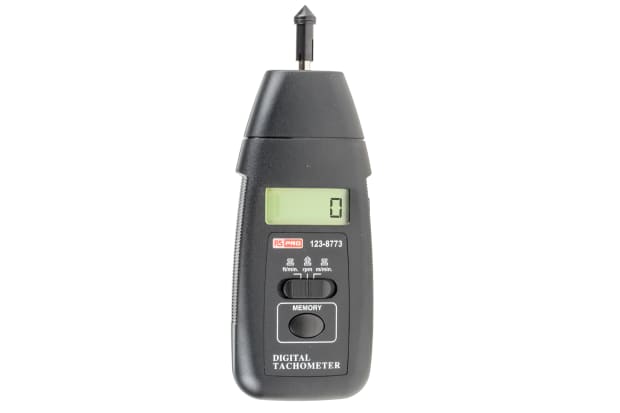Comprehensive Overview to Understanding and Using a Tachometer Efficiently
Comprehensive Overview to Understanding and Using a Tachometer Efficiently
Blog Article
Exploring the Functions and Benefits of a Tachometer: A Comprehensive Guide for Auto Fanatics
From supplying real-time data on engine rate to assisting in optimizing gear changes, the tachometer serves as more than just a dial on the control panel. Its diverse features not only enhance driving experience yet also play a crucial role in maintaining engine health and wellness and performance.
Recognizing the Basics of a Tachometer
In the realm of auto instrumentation, recognizing the basics of a tachometer is crucial for any type of automobile lover wanting to delve into the intricacies of engine performance monitoring. A tachometer, usually displayed on the dashboard of a lorry, measures the engine's revolutions per min (RPM) This critical tool supplies real-time information on how quick the engine crankshaft is turning. By monitoring the RPM, drivers can ensure they are operating within the optimal variety to optimize efficiency and efficiency.
Tachometers usually have actually a scale noted in changes per minute, with a redline showing the optimum rate at which the engine can securely run (tachometer). This details is essential for preventing engine damage and enhancing gear moving for hand-operated transmissions. Furthermore, tachometers can help in diagnosing engine issues such as misfires or a failing ignition system by spotting uneven RPM readings
Importance of Checking Engine Rate

Keeping track of engine rate is an essential element of car maintenance and performance optimization for vehicle lovers and professionals alike. The engine rate, determined in transformations per min (RPM), shows exactly how quick the engine's crankshaft is rotating. By maintaining a close eye on the RPM, motorists can guarantee that the engine is operating within the optimal array, preventing possible damage from over-revving or delaying. Keeping an eye on engine speed is especially critical during equipment shifts, as it aids drivers identify the right time to alter gears for smooth velocity and efficient gas consumption.
Additionally, tracking engine rate can additionally provide important understandings right into the overall wellness of the car. Uncommon variations in RPM may suggest concerns such as a clogged air filter, fuel system issues, and even engine misfires. By spotting these problems early on through the tachometer analyses, chauffeurs can attend to possible concerns promptly, avoiding a lot more severe damages and pricey fixings down the line. Overall, keeping track of engine speed with a tachometer is an essential practice that can improve driving efficiency, extend engine life, and make sure a more secure and extra enjoyable driving experience.
Enhancing Performance Through Gear Shifts
Enhancing performance via tactical equipment changes is a crucial aspect of optimizing an automobile's effectiveness and power output. Proper equipment moving makes certain that the engine operates within its optimal power band, permitting smooth velocity and improved gas economic climate. When moving gears, it is critical to take note of the engine speed showed on the tachometer. By checking the engine transformations per min (RPM), motorists can figure out the most suitable moments to upshift or downshift for optimum performance.

To accomplish peak efficiency via equipment shifts, chauffeurs must exercise smooth and prompt transitions between gears, matching engine speed with road speed additional hints to harness the complete possibility of their lorry's powertrain.
Optimizing Performance With a Tachometer
Grasping the art of equipment shifting in high-performance cars not only improves driving experience however additionally plays an important function in making best use of efficiency with a tachometer. tachometer. By paying close attention to the tachometer readings, drivers can optimize their gear shifts to run within the engine's most reliable array. When increasing, changing gears at the right RPM indicated by the tachometer can prevent the engine from straining or underperforming, bring about boosted gas efficiency and general performance
Additionally, a tachometer helps vehicle drivers stay clear of unneeded revving, which not only loses gas however also places unnecessary strain on the engine. Consistently checking the tachometer while driving permits for smoother gear changes, reducing deterioration on the transmission system gradually.

Advanced Tips for Tachometer Use
Enhancing driving accuracy through adept tachometer interpretation is key to enhancing car efficiency. To explore sophisticated tips for tachometer usage, think about incorporating using shift lights. Change lights are aesthetic indications that illuminate when it's time to change equipments based upon engine transformations per minute (RPM), enabling for seamless gear adjustments without constantly checking the tachometer. In addition, exercising heel-and-toe downshifting strategy can be valuable when going for smoother transitions in between gears. This strategy includes making use of both the brake and accelerator pedals simultaneously while downshifting, assisting to keep engine RPM and stop jerky motions. Moreover, using a performance tachometer with adjustable settings can give real-time data customized to details driving choices or automobile modifications. By fine-tuning shift points and setting advising thresholds, motorists can optimize velocity and engine performance while lessening the risk of over-revving. These innovative methods, when combined with a deep understanding of tachometer readings, can boost driving effectiveness and overall driving experience.
Final Thought
In final thought, the tachometer works as a critical tool for car enthusiasts to keep track of engine speed, enhance performance with gear changes, and more helpful hints take full advantage of effectiveness. By comprehending the features and advantages of a tachometer, vehicle Website drivers can maximize their driving experience and prolong the life expectancy of their lorry. Utilizing sophisticated ideas for tachometer application can additionally improve driving skills and total efficiency when traveling.
Report this page